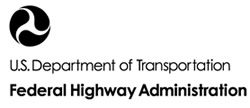Safety Eligibility Letter B-231 (REVISED)

1200 New Jersey Ave. S.E.
Washington, D.C. 20590
July 10, 2014 HAND CARRIED BY WL
In Reply Refer To:
HSST/B-231 Revised
Scott Rosenbaugh
Research Associate Engineer
Midwest Roadside Safety Facility UNL
2200 Vine Street
130 Whittier Building
Lincoln NE, 68583-0853
Dear Mr. Rosenbaugh:
This letter is in response to your request for revisions to the existing eligibility letter B-231 dated January 27, 2012, and for the Federal Highway Administration (FHWA) to review a roadside safety system for eligibility for reimbursement under the Federal-aid highway program.
| Name of system: | Transition from steel post MGS to thrie-beam approach |
|---|---|
| Type of system: | W-beam to thrie-beam stiffness transition |
| Test Level: | MASH Test Level 3 |
| Testing conducted by: | Midwest Roadside Safety Facility |
| Task Force 13 Designator: | STG03a |
| Date of request: | June 28, 2011 |
| Date of revision request: | April 10, 2014 |
| Date of completed package: | June 28, 2011 |
Decision:
The following device is eligible, with details provided in your letter of June 28, 2011, which is enclosed as an integral part of this finding:
- Stiffness Transition from steel post MGS with 12-inch deep blockouts to thrie-beam approach using asymmetrical "Y."
Based on a review of submitted revisions to existing eligibility letter B-231 dated January 27, 2012 and to crash test results submitted by the manufacturer certifying the device described herein meets the crashworthiness criteria of the American Association of State Highway and Transportation Officials' Manual for Assessing Safety Hardware (MASH), the device is eligible for reimbursement under the Federal-aid highway program. Eligibility for reimbursement under the Federal-aid highway program does not establish approval or endorsement by the FHWA for any particular purpose or use.
The FHWA, the Department of Transportation, and the United States Government do not endorse products or services and the issuance of a reimbursement eligibility letter is not an endorsement of any product or service.
Requirements
Roadside safety devices should meet the guidelines contained in the MASH.
Description and Crash Testing
Guardrail to bridgerail transitions are designed to gradually increase the stiffness of the semi-rigid w-beam barrier until connected to the rigid bridge railing. Typically, a single critical impact point (CIP) has been evaluated with full-scale crash testing. That CIP is usually located at the point where we anticipate the greatest likelihood of vehicle snagging or pocketing near the beginning of the rigid bridge railing. Because the stiffness of the barrier transition hardware needed to adequately shield the end of the rigid bridge railing is substantial, there is also reason to determine if the change in stiffness between the w-beam guardrail and the transition design itself is safe. A transition from the MGS with 12-inch deep blockout to a stiffened thrie-beam rail using an asymmetrical "Y" transition piece was evaluated in your crash testing. The enclosed letter describes the transition design and the two crash tests conducted.
Also enclosed are the test data summary sheets and drawings of the transitions.
Findings
Therefore, the system described and detailed in the attached letter, including the various attachment alternatives, is eligible for reimbursement and may be installed under the range of conditions tested.
Please note the following standard provisions that apply to FHWA eligibility letters:
- This letter provides a AASHTO/ARTBA/AGC Task Force 13 designator that should be used for the purpose of the creation of a new and/or the update of existing Task Force 13 drawing for posting on the on-line ‘Guide to Standardized Highway Barrier Hardware’ currently referenced in AASHTO Roadside Design Guide.
- This finding of eligibility is limited to the crashworthiness characteristics of the systems and does not cover their structural features, nor conformity with the Manual on Uniform Traffic Control Devices.
- Any changes that may influence the crashworthiness of the system will require a new reimbursement eligibility letter.
- Should the FHWA discover that the qualification testing was flawed, that in-service performance reveals safety problems, or that the system is significantly different from the version that was crash tested, we reserve the right to modify or revoke this letter.
- You will be expected to supply potential users with sufficient information on design and installation requirements to ensure proper performance.
- You will be expected to certify to potential users that the hardware furnished has the same chemistry, mechanical properties, and geometry as that submitted for review, and that it will meet the crashworthiness requirements of the Manual for Assessing Safety Hardware.
|
Sincerely yours, /* Signature of Michael S. Griffith */ Michael S. Griffith |
Enclosures
